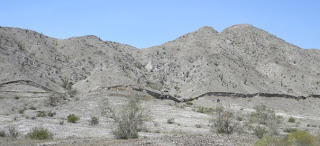Geologists have a new tool to study how earthquakes change the landscape, and it's giving them insight into how earthquake faults behave. In the Feb. 10 issue of the journal Science, a team of scientists from the United States, Mexico and China, including geophysicist Eric Fielding of NASA's Jet Propulsion Laboratory, Pasadena, Calif., reports the most comprehensive before-and-after picture yet of an earthquake zone, using data from the magnitude 7.2 event that struck near Mexicali, northern Mexico in April 2010.
"This study provides new information on how rocks in and around fault zones are deformed during earthquakes," said Fielding. "It helps scientists understand past events and assess the likelihood of future earthquakes in other complex systems of faults."
The team, working with the National Center for Airborne Laser Mapping, flew over the area with lidar (light detection and ranging), which bounces laser pulses off the ground and measures their reflection to determine the height of the surface. New airborne lidar equipment can measure features in the surface height to within a few inches. The researchers were able to make a detailed scan after the earthquake over about 140 square miles (363 square kilometers) in less than three days, said Michael Oskin, geology professor at the University of California, Davis. He is the lead author of the study, which was funded by the National Science Foundation, the U.S. Geological Survey, Consejo Nacional de Ciencia y Tecnología (Mexico) and NASA.

No comments:
Post a Comment